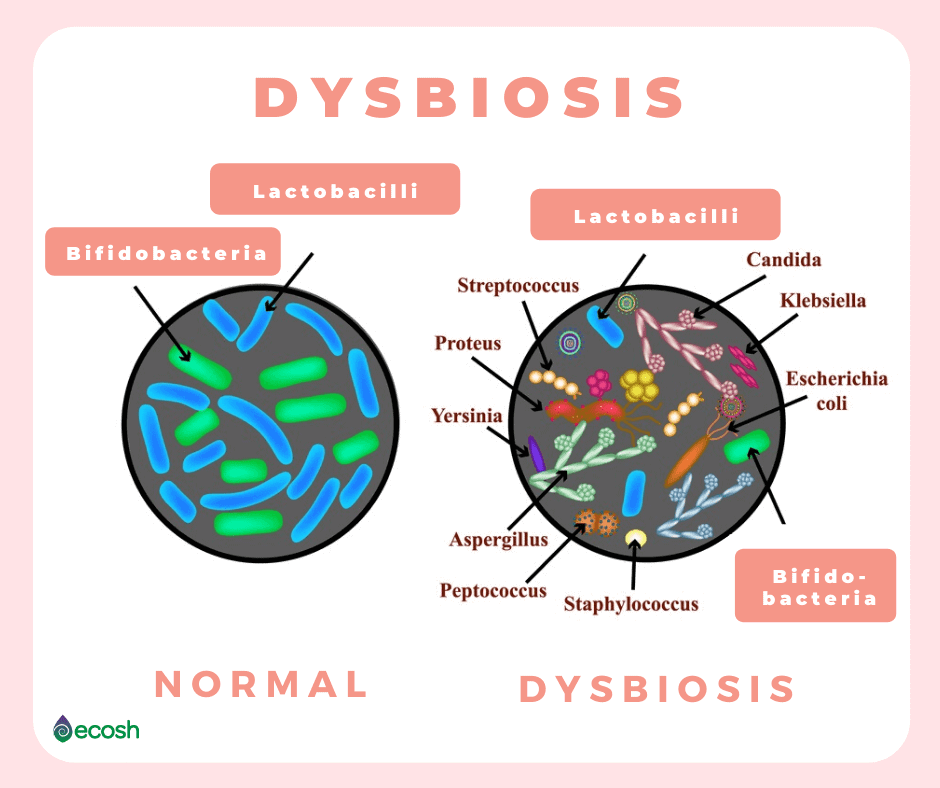Spotting the Signs: A Parent’s Guide to Recognizing Dysbiosis Symptoms in Children
Hey there, wonderful parents! ? Have you ever heard your little one complaining about an upset tummy more often than usual? Or perhaps they just haven’t been their usual bubbly selves? It might be something more than just a bad day – it could be dysbiosis, a sneaky imbalance in the gut bacteria that can affect children and adults alike.
If you’re scratching your head wondering, “What on Earth is dysbiosis?” – don’t worry, you’re in good company! ? Dysbiosis is when the natural balance of microorganisms in our intestines gets thrown out of whack. This can lead to a bunch of uncomfortable symptoms and affect overall health. But fret not! We’re here to dive into the tell-tale signs of dysbiosis and give you some friendly insights on how you can support your little one through this gut-wrenching journey.
? What Does Dysbiosis Look Like in Kids? ?
Children are amazing bundles of energy and fun, but they can also be quite sensitive to changes in their bodies. Dysbiosis can manifest in a variety of ways, so let’s explore some common symptoms that can help you identify if there’s a party of unwanted bacteria causing trouble in your child’s tummy:
- Gastrointestinal Grievances: If your child repeatedly complains about stomach aches, constipation, or diarrhea, it might be more than just an off meal. These are classic signals that the gut’s microbiome could be out of balance.
- Food Intolerances: Suddenly, your little one can’t handle dairy or gluten like they used to. New sensitivities to foods can be a red flag for dysbiosis.
- Mood Swings: What’s up with the mood rollercoaster? An imbalance in the gut can directly impact their mood – yes, the gut is that powerful!
- Skin Issues: Eczema or itchy skin often join the dysbiosis party uninvited. Seeing new or worsening skin issues may be another clue.
- Immune System Whims: Frequent colds or infections? The gut holds a big part of our immune defenses, so dysbiosis might be letting those germ-gate crashers in.
Note: No symptom alone can confirm dysbiosis, which is why it’s crucial to chat with a healthcare provider if you suspect your kiddo might be dealing with it. Sharing your observations is always the best first step! ?
?? How Can You Support Your Child’s Gut Health? ??
Now, if you’re worried about dysbiosis, you’re probably eager to know how you can help your child restore that much-needed balance. Before we delve into the specifics, remember – your power as a parent is immense! You have the ability to shape your child’s health with simple, everyday choices. So, let’s get equipped with some initial steps to promote a happy tummy:
- Please Keep a Food Diary: Not the most fun thing, we know, but tracking what goes into your little trooper’s belly can be invaluable. It can help identify triggers and make informed decisions about diet changes.
- Goodbye, Processed Foods: We all know that ultra-processed goodies aren’t exactly health foods, right? Cutting down on those and nurturing your child’s body with whole, nutrient-dense foods can do wonders.
- Probiotics for the Win: These friendly bacteria are like the superheroes of the gut. Whether through fermented foods or supplements, they can help balance the microbial mix.
- Fiber is Fabulous: This isn’t just about keeping things moving; fiber helps feed the good gut bugs, so load up on fruits, veggies, and whole grains.
Taking these steps can positively impact your child’s gut flora and help alleviate dysbiosis symptoms. But remember, every child is unique, and what works for one might not work for another. Always approach changes at a comfortable pace for your family and consult with a healthcare provider when in doubt. ?
Stay tuned as we continue to unwrap the layers of understanding dysbiosis and arm you with knowledge and strategies for managing your child’s gut health. Together, let’s keep your little one’s tummy as happy as they are playing in a sunny park! ??

5 Essential Things Parents Should Know When Preparing for Dysbiosis Symptoms
Getting ready to tackle dysbiosis is like gearing up for a grand adventure. You need the right tools, a map, and a sprinkle of patience. Here are five indispensable nuggets of wisdom to prepare you for the journey:
- 1. The Balance is Delicate:
The microbiome is a finely tuned ecosystem. Much like a seesaw, it doesn’t take much to tip the balance. Stress, antibiotics, and poor diet – they can all push that seesaw in the wrong direction. Being aware that many factors influence your child’s gut health puts you a step ahead in maintaining balance. - 2. Symptoms Can Be Subtle:
Dysbiosis doesn’t shout; it whispers. Watch for mild and persistent symptoms that you might otherwise dismiss as “just a phase.” Children often can’t articulate what feels off in their bodies, so being vigilant helps catch dysbiosis early on. - 3. It’s Not Just About the Gut:
Dysbiosis has tentacles that reach further than you may think. Beyond stomach issues, it can influence behavior, learning, and even sleep. Keeping tabs on these areas can be crucial in identifying the full scope of the issue. - 4. The Diet Connection:
What your child eats feeds not just them, but also their gut bacteria. Understanding how different foods influence the microbiome is key. “You are what you eat” is more like “you and your trillions of bacterial friends are what you eat.” - 5. Professional Guidance is Priceless:
While the internet is awash with advice, nothing beats a personalized plan from a healthcare professional. Every child’s gut journey is unique, and professional input ensures you’re charting the right course.
Having your arsenal ready and knowing what lies ahead empowers you to handle dysbiosis more effectively. Your role as a parent is crucial, so absorb this knowledge and prepare to guide your child back to balanced health with confidence and love. ??
? The Science Behind Dysbiosis: Uncovering the Microbiome Mystery ?
We’ve been talking symptoms and strategies, but what’s going on under the hood? The human microbiome is a bustling metropolis of bacteria, viruses, and fungi that reside mostly in the gut. In healthy individuals, there’s a harmony between helpful and less helpful residents. Dysbiosis, however, is akin to traffic jams and pollution in our little city – it hampers well-being and can lead to diseases.
Researchers have discovered that the diversity of this microbiome is crucial. A wider variety of species seems to equate to better health. And guess what loves to increase diversity? Fiber-filled plants and fermented foods – remember those? ???
Remember the link between the brain and the gut? It’s called the gut-brain axis, and it means that your child’s gut health can impact their mental health and vice versa. So when you comfort that cranky tummy, you might just be soothing the mind too. ?
Every day, science is learning more about the microbiome and its profound effects on our health. As a parent, understanding that connection helps you make better choices for your child’s well-being.
? Diagnosing Dysbiosis: Helping Doctors Help You ?
So, you’ve noticed some signs and you’re pretty sure dysbiosis is the uninvited guest at the party. What next? To confirm your suspicions and tailor a treatment plan, doctors might perform several tests:
- Stool Analysis: This gives a snapshot of which microbes are in the gut and in what proportions, helping discern a state of dysbiosis.
- Food Allergy and Sensitivity Tests: Sometimes these tests can indicate which foods are causing issues, so your child can avoid them and give their gut a break.
- Breath Tests: Non-invasive breath tests can sometimes help diagnose small intestinal bacterial overgrowth (SIBO), a type of dysbiosis.
Working closely with healthcare providers to navigate these tests and interpret results ensures a comprehensive approach to tackling your child’s dysbiosis. The more pieces of the puzzle you have, the clearer the picture of health you can create. ?
? Real Parents, Real Stories: Handling Dysbiosis Together ?
It’s encouraging to know you’re not alone, right? Many parents have been in your shoes, navigating the choppy waters of dysbiosis with their little ones. Here are snippets from parents who’ve come out on the other side:
“When my son kept getting stomach aches, I thought it was school stress. But after learning about dysbiosis and adjusting his diet, it’s like we have a new kid. He’s happier and so much more energetic!” – Jamie, mom of two
“My daughter had eczema that just wouldn’t quit. We tried creams, but it was a diet change and adding probiotics that turned things around. Knowing about dysbiosis was a game-changer for us.” – Alex, grateful dad
These parents have been in the trenches and came out holding a flag of triumph. Their experiences highlight the impact that understanding and managing dysbiosis can have. With knowledge, vigilance, and a proactive approach to gut health, you too can support your child’s journey to a happier, healthier life.
Stay tuned as we continue to unwrap the layers of understanding dysbiosis and arm you with knowledge and strategies for managing your child’s gut health. Together, let’s keep your little one’s tummy as happy as they are playing in a sunny park! ??
See more great Things to Do with Kids in New Zealand here. For more information see here
Disclaimer
The articles available via our website provide general information only and we strongly urge readers to exercise caution and conduct their own thorough research and fact-checking. The information presented should not be taken as absolute truth, and, to the maximum extent permitted by law, we will not be held liable for any inaccuracies or errors in the content. It is essential for individuals to independently verify and validate the information before making any decisions or taking any actions based on the articles.




